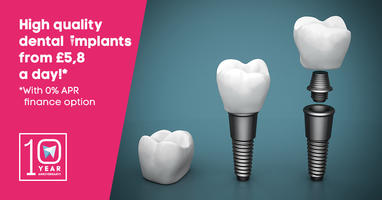Dental bridges are a row of dental crowns that are meant to bridge the gap of more than one missing tooth next to each other. Bridges can be made of porcelain, metal, or pretty much anything a crown can be made from, and they can be house don a tooth or dental implant, can be bonded to healthy teeth near the gap, or housed in artificial gum material like resin, plastic or even wood (this is rare nowadays). Let’s take a look at the different kinds of bridges then, and see the differences between them.
Traditional Bridges
Traditional bridges work in a way most people expect bridges to work. They are hollowed out at one or more points on the bottom of the row of crowns, usually do not (but can) have a base of artificial gum, and work by adhering the bridge to the teeth or dental implants that have the missing crowns. If you have living teeth that the bridge will go on top of, the tooth will first be shaped to fit the hole on the bottom of the bridge. Then, the bridge will be adhered to the top of the teeth, and you will have your bridge. A bridge of this type can replace any number of teeth.
Cantilever Bridges
Cantilever bridges can be made of any material, can have a base of artificial gum, but cannot replace any number of teeth. They need at least one tooth as a supporting structure. This is because one side of the bridge will have a wing on it that needs to be bonded to a living, healthy tooth. A bridge of this sort can only replace 2-3 teeth, and cantilever bridges should not be longer than that as they will collapse unto themselves for the force of chewing and biting. These bridges usually do not go on top of a dental implant, and thus can only be used when there are still living teeth near the gap that needs to be bridged.
Maryland Bridges
Maryland bridges are like a double ended Cantilever bridge. They have two wings of either side, and require healthy teeth to be around the gap on both sides. They can be made of any material crowns are made of, and almost never have a base with them. Maryland bridges can replace many teeth, and can even serve as a fixed partial denture, but they still need to have teeth on either side of them to be bonded to.
I hope this short overview will be informative and will help you in your decision of what kind of dental bridge to get. You should still converse with your dentist before getting bridgework done, and the best option for you will be recommended by your dentist.
image. 1.

